Final Fantasy XII: Revenant Wings (Nintendo DS) Review
By Az Elias  28.04.2011
28.04.2011
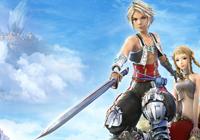
Square Enix haven’t had too much practice in the real-time strategy department, but when Motomu Toriyama (Final Fantasy X, X-2, XIII) said he wanted to create an RTS game that would introduce the genre to Japanese gamers and act as a “My First Final Fantasy” the result was Final Fantasy XII: Revenant Wings. Square hooked up with developers Think & Feel, who worked on the Japan-only Game Boy Advance RTS Monster Summoner. Though originally not planned to have anything to do with the Final Fantasy XII universe, this sequel to the hit PlayStation 2 game takes a new approach to the series. Revenant Wings still has that traditional RPG feel from previous entries in the series, but is aimed more at those unfamiliar to RTS games, and so takes a simplistic approach. For its overseas release though, increased difficulty and a challenging side quest were added. Released over three years ago in Europe, is Revenant Wings worthy of being added to your DS collection?
Revenant Wings is set one year after the events of Final Fantasy XII, when a time of peace has settled across Ivalice. Vaan, the leading man from Final Fantasy XII, is finally a sky pirate and journeys with his partner and childhood friend Penelo. Vaan finds a mysterious treasure known as Auracite and comes across a strange airship. He sneaks aboard and the ship reacts to his newly found stone, taking off and sending him to the floating sky continent of Lemurés, home to the aegyl race. It’s here that Vaan saves and befriends one of these people, Llyud, who has been attacked by other sky pirates who had stumbled upon this land. Vaan sets out to save the rest of the aegyl and a new adventure begins that sees familiar faces returning in a well-written light-hearted storyline. It isn’t necessary to have played Final Fantasy XII beforehand, as the story is pretty much completely unrelated to the first game, but it is nice to know who and what people are talking about at some points in the story. You even get to revisit some parts of Ivalice, which is a nice feeling later in the game. The sense of adventure and a more peaceful side to the game makes for an enjoyable experience.
From the moment you switch Revenant Wings on, you’re greeted with a beautiful cinematic along with the famous Final Fantasy theme, and straight away it has that Square Enix magic that we’ve all become accustomed to. The colourful graphics are very impressive and show what can be done on DS: map locations are all rendered with a high level of detail that should be commended, the character sprites look great from the isometric viewpoint, but obviously less so when the camera zooms in on them during certain cut scenes.
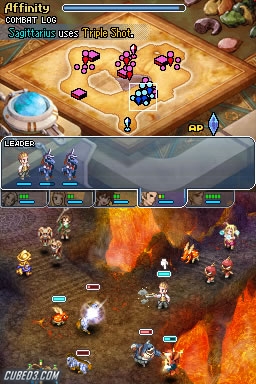
Being purposefully geared towards simple, pick up and play action, Revenant Wings is split up into various missions, each lasting roughly 15 to 30 minutes each. Prior to each battle, you are asked to prepare your battle team, choosing which party leaders you want in your team, and the Espers that you can summon to help you. Using the power of the Auracite, you are able to call these Espers from summoning gates that are featured on certain maps. This is a key feature of the battle system. The further you get in the game, the more Espers you can unlock with the Auracite that you collect. Espers have elemental properties and are always one of three types: melee, ranged or flying. This rock, paper, scissors approach works in the same way as it does in the Fire Emblem series. Espers are also ranked from 1 - 3, with rank 3 Espers being the strongest. You can only have one rank 3 Esper in your party at any one time and can unlock more by defeating them in missions.
Revenant Wings is controlled almost entirely with the stylus and touch-screen. To attack an enemy, you simply tap the character you want to attack with, then tap on the enemy. Simple graphic icons appear to show the command was successful, such as a clash of swords on the enemy to be struck, or a heart on the character to be healed. Characters have magic and abilities that can be used in battle, and can be accessed through a menu on the touch-screen with a couple of taps. Shortcuts on the touch-screen allow you to choose individual units or groups, whilst a quick click of the X button selects the whole party. The D-pad moves the camera around the touch-screen, and the top screen is used as a mini-map of the level, displaying enemies, treasure and other points of interest.
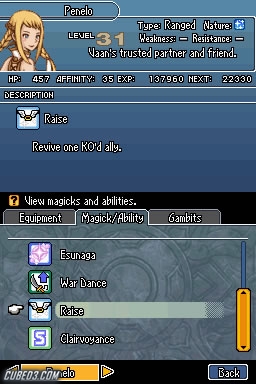
This simple ‘point and click’-like approach works extremely well, though it is not without the odd niggle. There can be times where the screen gets so crowded with characters that it becomes difficult to select the unit you want. In the heat of battle it can get frustrating, but thankfully it doesn’t happen all too often. Other minor problems include slowdown when a large number of units gather on screen, enemies being hidden behind objects because of the fixed camera, and characters getting stuck behind others or trapped in the middle of a group - letting units walk through each other would have solved this. Thankfully, these things don’t happen all too often.
Back from Final Fantasy XII is the gambit system, allowing your main characters to perform one of their abilities independently in battle. Another returning feature are quickenings; the limit breaks of the game. Each character has different means of building their quickening bar (attacking enemies builds Vaan’s gauge, for example), and aid the party in different ways. Vaan’s deals a high amount of damage to all enemies in range of it, whilst Penelo’s heals the party back to full health.
The traditional experience-based level up system is in place to strengthen your characters, although there is a big emphasis on forging weapons from the books you find on your journey. Between missions, you can go inside your airship to buy and craft things using materials gathered from scavenges or won in battles. Obtaining rare materials, mainly from side quests, is usually the key to building strong weapons. Armour and accessories are also obtainable through battles and shops, which boost your defence and give you special abilities. For example, some accessories increase the amount of EXP earned, or allow your party to move faster in battle.
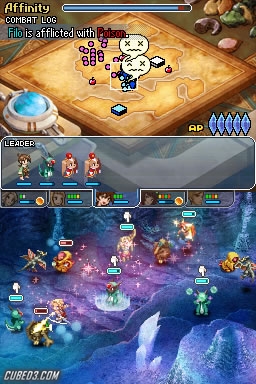
Variation of mission goals is a strength of Revenant Wings. Sometimes you must defeat all enemy leaders, scavenge for a rare item on the field, defend your team’s soul crystal while attempting to destroy the enemy’s, or keep certain characters you meet alive for the duration of the battle. Upon bringing the game overseas, Square Enix have adjusted the balance of the game to make it more difficult, and also added a more challenging side quest for further replayability. Despite most missions being pretty easy affairs for the first part of the game, the challenge really does kick in later on, and you’ll find yourself trying to take different approaches to the levels. The final missions of the story practically force you to grind your characters’ levels up, because it gets insanely difficult. Beating all of the side missions to obtain 100% completion is no easy feat, but this will please experienced gamers looking for a challenge, or those who were worried after hearing the Japanese version was easy.
Final Fantasy XII composer Hitoshi Sakimoto is behind the music score, accompanied by Kenichiro Fukui. Most of the tracks in Revenant Wings are arrangements of those in the first game, and despite being MIDI delivered through DS’ little speakers, the differences between the versions actually aren’t that noticeable. The quality of the music is simply brilliant, and those who have played Final Fantasy XII will really enjoy hearing familiar tunes again. This time around though, the music is dynamic and changes throughout the course of battle depending on your situation. You cannot help but be impressed with what the team did with the soundtrack in this game.
Revenant Wings isn’t overly difficult, but later missions, especially certain side quests, can have you tearing your hair out. It’s of good length, and the quick fire missions work well to satiate that pick up and play feeling whenever you fancy a quick battle. Minor niggles to the battles don’t detract from the overall great experience - if you’re a fan of Final Fantasy or RTS games, you’ll definitely want to give Revenant Wings a go.
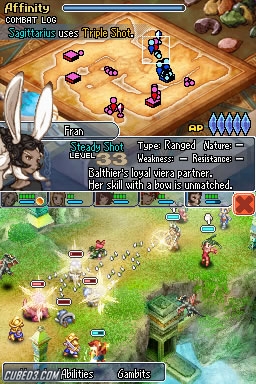
Cubed3 Rating
Great - Silver Award

Square Enix have never been afraid to take their most well-known franchises in different directions, and they really got it right in this conversion of Final Fantasy to RTS. The story is well-written and the mix of RTS and RPG comes off really well, with the depth of the latter and likeable characters, beautiful graphics and an easy to pick up, yet fun, battle system. If you’re a fan of Final Fantasy or looking for a decent RTS to play on the go, you cannot go wrong with Revenant Wings - it’s accessible to just about everyone and deserves its Final Fantasy title.
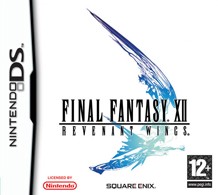
![]() 8/10
8/10
![]() 9/10
(19 Votes)
9/10
(19 Votes)
 Out now
Out now  Out now
Out now  Out now
Out now  Out now
Out now Comments
Comments are currently disabled

 Sign In
Sign In Game Details
Game Details Subscribe to this topic
Subscribe to this topic Features
Features





 Top
Top

